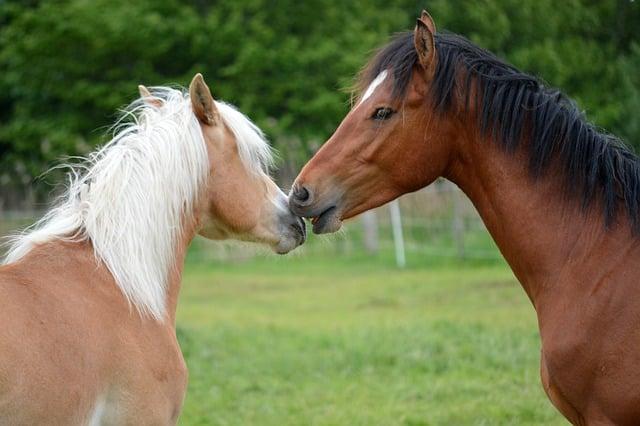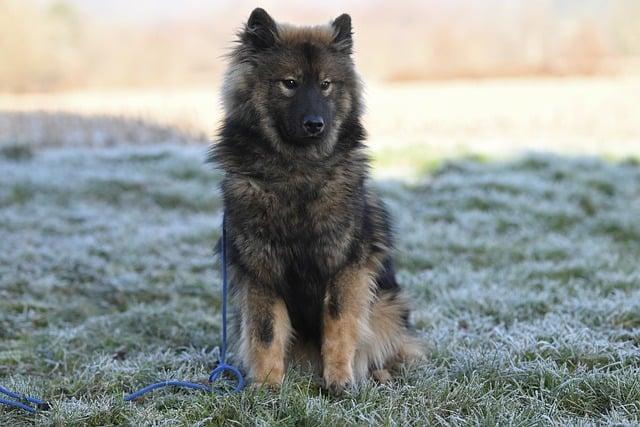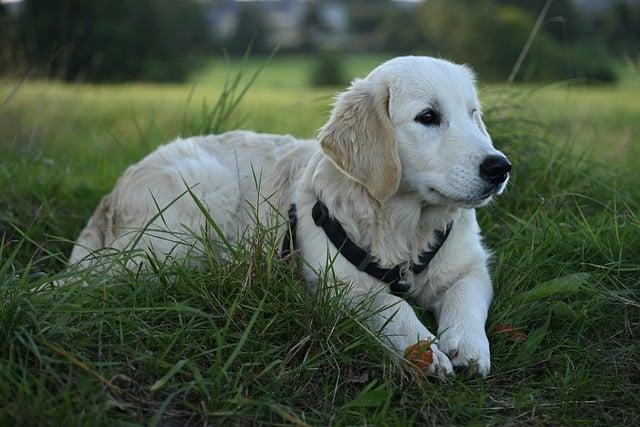As the sun dipped below the horizon, a playful puppy named Max tugged at a colorful rope, his eyes sparkling with excitement. His owner hesitated, wondering if engaging in a game of tug-of-war was wise. But here’s the secret: playing tug-of-war with a puppy can be beneficial! It strengthens your bond, teaches impulse control, and provides essential physical exercise. Just ensure the game is gentle and controlled, allowing Max to learn when to let go. So, grab that rope and let the fun begin—your puppy will thank you!
Contents
- Understanding the Benefits of Tug-of-War for Puppy Development
- Recognizing the Risks and Safety Precautions in Tug-of-War Play
- Implementing Effective Training Techniques During Tug-of-War Sessions
- Choosing the Right Toys and Environment for Safe Tug-of-War Activities
- Q&A
Understanding the Benefits of Tug-of-War for Puppy Development
Engaging in tug-of-war with your puppy can be a delightful and beneficial activity that fosters both physical and mental development. This interactive game not only provides an outlet for your puppy’s natural instincts but also encourages healthy exercise. The physical exertion involved helps to build muscle strength and coordination, essential components for a growing pup. As they tug and pull, they learn to control their movements, enhancing their overall agility.
Moreover, playing tug-of-war can significantly strengthen the bond between you and your puppy. This game requires communication and cooperation, allowing your puppy to understand cues and commands better. By establishing rules during play, such as “drop it” or “take it,” you are teaching your puppy valuable lessons in obedience and impulse control. These interactions create a foundation of trust and respect, which is crucial for a well-adjusted adult dog.
Additionally, tug-of-war can serve as a fantastic mental stimulation tool. Puppies are naturally curious and intelligent, and engaging them in this game challenges their problem-solving skills. They learn to strategize and think critically about how to win the game, which can translate into improved cognitive abilities. Incorporating variations, such as changing the speed or direction of the game, can keep your puppy engaged and mentally sharp.
Lastly, this playful activity can help alleviate behavioral issues that stem from boredom or excess energy. A well-exercised puppy is less likely to engage in destructive behaviors, such as chewing furniture or excessive barking. By channeling their energy into a fun and productive game, you are not only providing entertainment but also promoting a balanced and happy lifestyle for your furry friend. Embracing tug-of-war as a regular part of your puppy’s routine can lead to a more harmonious relationship and a well-rounded canine companion.
Recognizing the Risks and Safety Precautions in Tug-of-War Play
Engaging in tug-of-war with your puppy can be a delightful bonding experience, but it’s essential to be aware of the potential risks involved. Puppies, with their boundless energy and developing bodies, may not always understand the limits of play. This can lead to injuries, both for them and for you. To ensure a safe and enjoyable game, it’s crucial to recognize these risks and take appropriate precautions.
One of the primary concerns during tug-of-war is the possibility of dental injuries. Puppies are still growing, and their teeth are not yet fully developed. **Excessive pulling** can lead to dental fractures or damage to their gums. To mitigate this risk, consider using toys specifically designed for tugging, as they provide a safer grip and reduce the likelihood of injury. Additionally, monitor your puppy’s enthusiasm and take breaks to prevent overexertion.
Another important factor to consider is the potential for aggressive behavior. Tug-of-war can sometimes trigger competitive instincts in dogs, leading to possessiveness or aggression over the toy. To prevent this, establish clear rules before starting the game. **Encourage positive behaviors** by rewarding your puppy when they release the toy on command or play gently. This will help reinforce good habits and create a more enjoyable experience for both of you.
Lastly, always be mindful of your puppy’s physical condition during play. Puppies can easily become overstimulated, leading to fatigue or stress. **Watch for signs of exhaustion**, such as heavy panting or reluctance to continue playing. If you notice these signs, it’s best to end the game and allow your puppy to rest. By prioritizing their well-being and safety, you can enjoy tug-of-war as a fun and enriching activity that strengthens your bond while minimizing risks.
Implementing Effective Training Techniques During Tug-of-War Sessions
Engaging in tug-of-war with your puppy can be a delightful experience, but to ensure it’s beneficial, implementing effective training techniques is essential. Start by establishing clear rules before the game begins. This helps your puppy understand when it’s appropriate to engage and when to let go. For instance, you might decide that the game only starts when you say a specific command, such as “tug,” and ends with “drop it.” This not only makes the game more structured but also reinforces your role as the leader.
Another important technique is to use the game as a reward for good behavior. When your puppy follows commands or exhibits desirable traits, such as sitting calmly or coming when called, reward them with a short tug-of-war session. This positive reinforcement encourages your puppy to associate good behavior with fun and excitement. Remember to keep the sessions short and engaging to maintain your puppy’s interest and prevent overstimulation.
During the game, it’s crucial to monitor your puppy’s body language. Look for signs of stress or aggression, such as growling or stiffening. If you notice any of these behaviors, it’s time to pause the game and redirect their energy. Teaching your puppy to play gently is vital; you can do this by allowing them to win occasionally, which boosts their confidence, but also ensuring they understand that you control the game. This balance fosters a healthy competitive spirit without encouraging aggressive tendencies.
Lastly, incorporate commands throughout the session to reinforce training. Use commands like “take it” when starting the game and “leave it” when you want your puppy to stop. This not only enhances their obedience but also keeps their mind engaged during play. By integrating these techniques into your tug-of-war sessions, you create a fun, interactive environment that promotes learning and strengthens the bond between you and your puppy.
Choosing the Right Toys and Environment for Safe Tug-of-War Activities
When engaging in tug-of-war with your puppy, selecting the right toys is crucial for ensuring a safe and enjoyable experience. Opt for **durable, non-toxic materials** that can withstand the enthusiastic pulling of a young pup. Look for toys specifically designed for tugging, such as those made from reinforced fabric or rubber. These materials not only provide a good grip but also minimize the risk of tearing, which can lead to choking hazards. Avoid toys with small parts or those that can easily break apart, as these can pose serious safety risks.
Creating a safe environment for tug-of-war is equally important. Choose a spacious area free from obstacles where your puppy can play without the risk of injury. Ensure the surface is non-slip to prevent any accidental falls during the game. Additionally, consider the presence of other pets or distractions that might interrupt the play session. A calm and controlled environment will help your puppy focus on the game, making it a more rewarding experience for both of you.
Establishing clear rules during tug-of-war can enhance safety and enjoyment. Teach your puppy the command to “drop it” or “leave it,” which will help you maintain control over the game. This not only reinforces good behavior but also allows you to end the game if it becomes too intense. Remember to monitor your puppy’s energy levels and take breaks as needed. This will prevent overstimulation and ensure that playtime remains a positive experience.
always supervise your puppy during tug-of-war sessions. This vigilance allows you to intervene if the game becomes too rough or if your puppy shows signs of frustration or aggression. By being present, you can guide the play and ensure it remains fun and safe. With the right toys, a controlled environment, and clear rules, tug-of-war can be a fantastic way to bond with your puppy while promoting healthy play habits.
Q&A
-
Is tug-of-war safe for puppies?
Yes, tug-of-war can be safe for puppies when played correctly. It helps them develop their physical strength and coordination. However, ensure that the game is supervised and that the puppy is not overly aggressive during play.
-
Does tug-of-war encourage aggressive behavior?
No, when played with rules and boundaries, tug-of-war does not encourage aggression. In fact, it can teach your puppy impulse control and how to play gently. Always reward calm behavior and stop the game if your puppy becomes too excited.
-
What are the benefits of playing tug-of-war with my puppy?
Playing tug-of-war offers several benefits, including:
- Strengthening the bond between you and your puppy.
- Providing mental stimulation and physical exercise.
- Teaching your puppy commands like “drop it” or “leave it.”
-
How can I make tug-of-war a positive experience?
To ensure a positive experience, follow these tips:
- Use a designated tug toy to establish boundaries.
- Set clear rules, such as stopping the game if the puppy’s teeth touch your skin.
- End the game on a high note, rewarding your puppy with praise or treats.
engaging in tug-of-war with your puppy can be a beneficial activity when done correctly. It fosters bonding, teaches impulse control, and provides essential exercise. Embrace this playful interaction to nurture a happy, well-adjusted companion.




